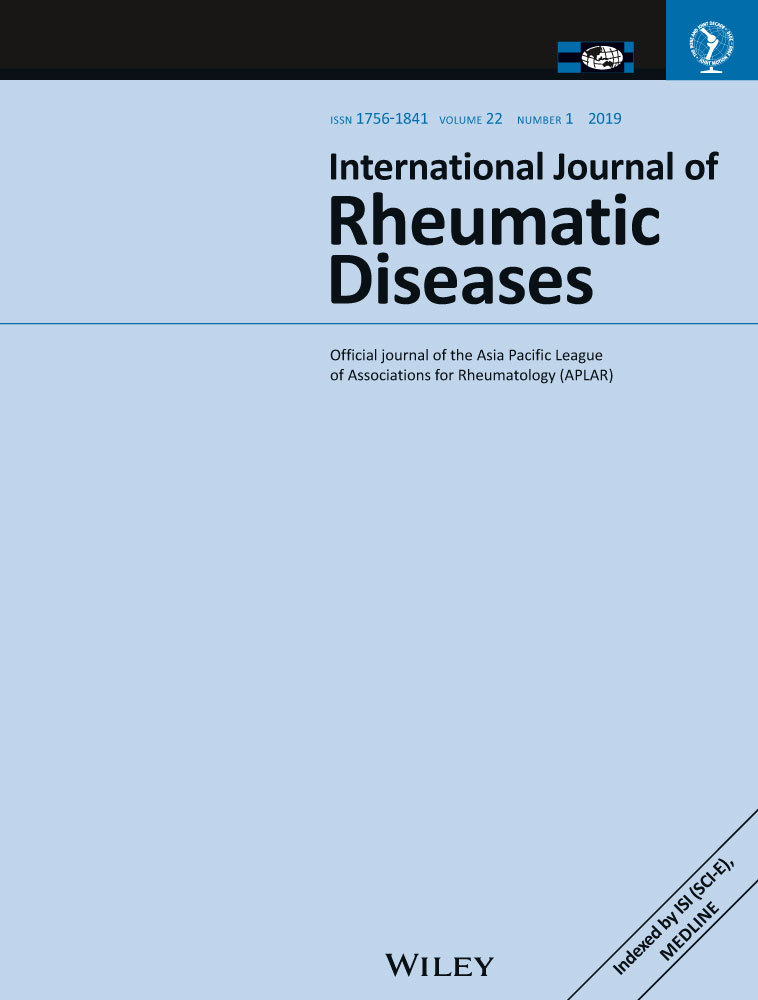Back to the basics: Understanding joint swelling and tenderness at the wrist in rheumatoid arthritis through the use of ultrasonography
Abstract
Aim
To compare ultrasound-detected inflammation with clinical manifestations at the wrist in rheumatoid arthritis (RA).
Method
Wrists assessed serially by assessors blinded to ultrasound findings were categorized into 4 groups: 1 = S0T0 (not swollen; not tender); 2 = S0T1 (not swollen; tender); 3 = S1T0 (swollen; not tender); 4 = S1T1 (swollen; tender). Ultrasound synovitis and tenosynovitis were graded semi-quantitatively (0-3) and dichotomously (0 or 1), respectively. The (a) power Doppler (PD), gray-scale (GS) and combined (PD + GS) ultrasound (CUS) scores and (b) their positivity (score > 0) were analyzed using a general linear repeated measures mixed model (a) assuming Gaussian errors and (b) with binary distribution and logit link, respectively. Pairwise comparisons among wrist groups were performed within context of the models.
Results
In 122 wrist assessments (baseline = 64; 3 months = 58) from 32 treated RA patients (87.5% female; mean disease duration 42.8 months), significant differences among groups for (a) scores were: 4 vs 1 (PD, P = 0.0031; GS, P = 0.0159; CUS, P = 0.0045), 4 vs 2 (PD, P = 0.0176; GS, P = 0.0160; CUS, P = 0.0074), and 4 vs 3 (CUS, P = 0.0374); and (b) positivity were: 4 vs 1 (PD, P = 0.0007), 4 vs 2 (PD, P = 0.0234), and 3 vs 1 (PD, P = 0.0202). No significant differences in results were found for groups 2 vs 1. No significant effects were attributable to differences in wrist side or follow-up visit.
Conclusion
Ultrasound detected substantial inflammation when wrist joint swelling and tenderness are both present. Joint swelling without tenderness is associated with significantly more frequent PD detection. Without swelling, joint tenderness is not associated with a significantly greater degree of ultrasound-detected inflammation.
CONFLICT OF INTEREST STATEMENT
The authors declare they have no conflicts of interest.




